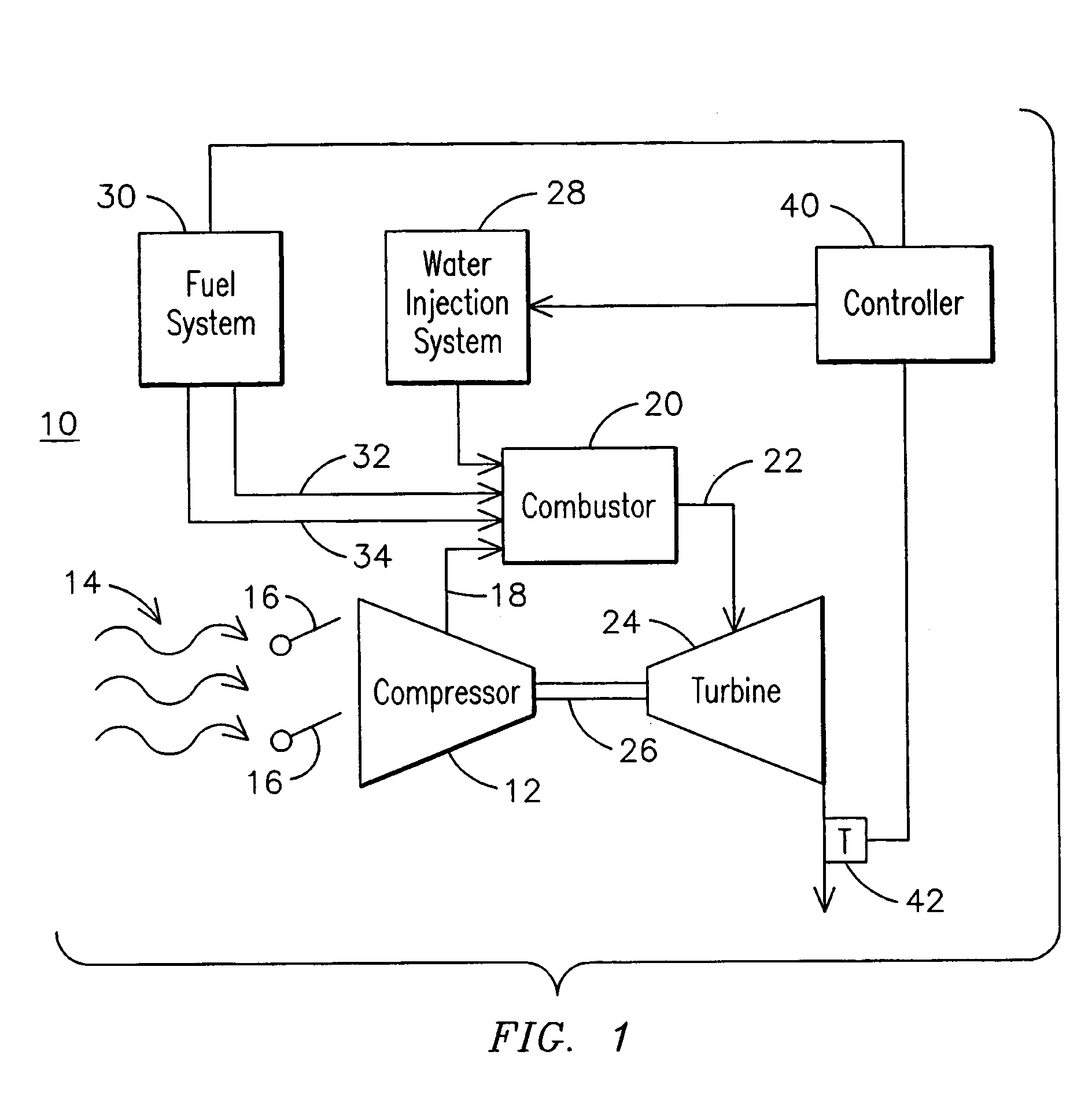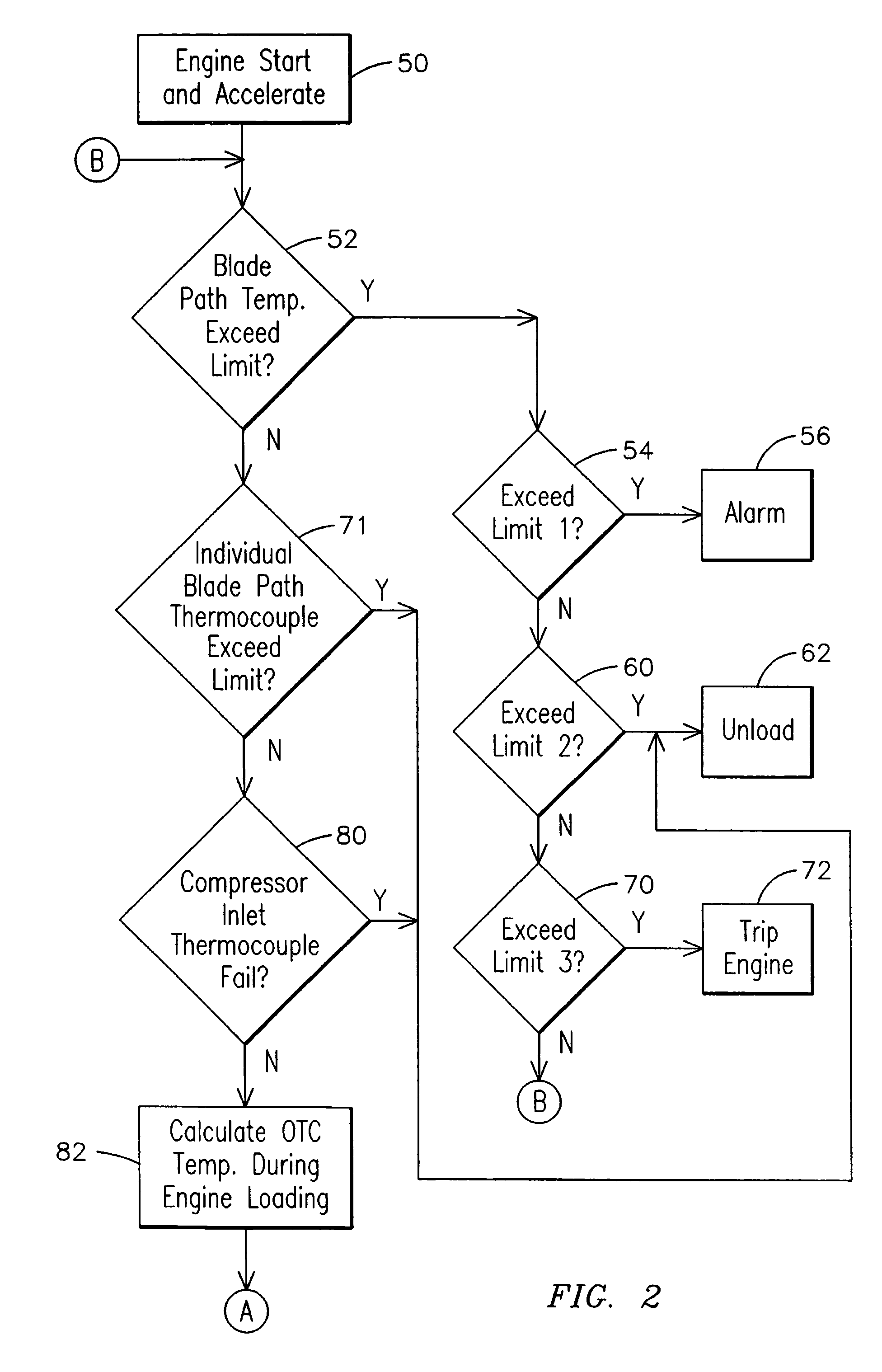Method of controlling a power generation system
a power generation system and control system technology, applied in the direction of engines, machines/engines, mechanical equipment, etc., can solve the problems of inefficient plant performance, loss of revenues to the plant operator, and financial losses to the operator of the plant or its customers
- Summary
- Abstract
- Description
- Claims
- Application Information
AI Technical Summary
Benefits of technology
Problems solved by technology
Method used
Image
Examples
Embodiment Construction
[0011]FIG. 1 illustrates a schematic of an exemplary gas turbine system 10, certain components of which may be referred to herein as an engine, which may employ embodiments of the invention. It will be recognized that embodiments of the invention may be used with various gas turbine or other power generation systems. System 10 may include a compressor 12 for inletting ambient air flow 14, which may be regulated by inlet guide vanes (IGV) 16 to control air flow to combustor 20. Compressed air 18 may be provided to a combustor 20, which may include an intermediate stage shell portion, and combustion gas 22 may be provided to a turbine 24 where energy is extracted to turn shaft 26. Shaft 26 may power the compressor 12 and auxiliary equipment such as an electrical generator (not shown).
[0012]System 10 may include a water injection system 28 and an exemplary fuel system 30. Fuel system 30 may provide two separately controllable flows of combustible fuel to combustor 20. A main fuel flow ...
PUM
 Login to View More
Login to View More Abstract
Description
Claims
Application Information
 Login to View More
Login to View More - R&D
- Intellectual Property
- Life Sciences
- Materials
- Tech Scout
- Unparalleled Data Quality
- Higher Quality Content
- 60% Fewer Hallucinations
Browse by: Latest US Patents, China's latest patents, Technical Efficacy Thesaurus, Application Domain, Technology Topic, Popular Technical Reports.
© 2025 PatSnap. All rights reserved.Legal|Privacy policy|Modern Slavery Act Transparency Statement|Sitemap|About US| Contact US: help@patsnap.com



